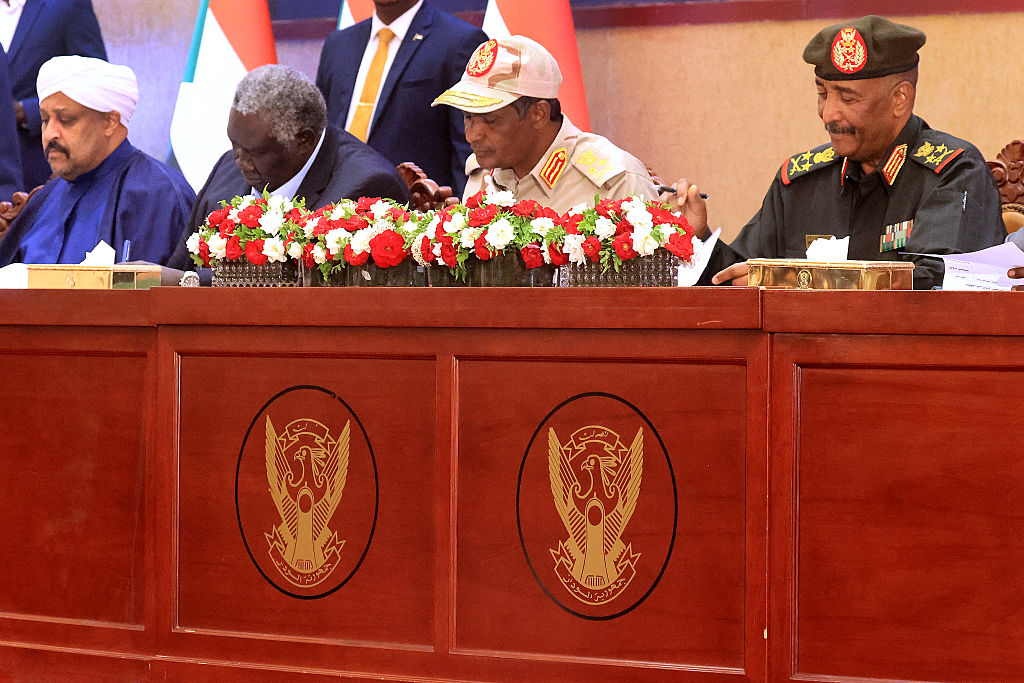Experts say the recent announcement of a parallel Sudanese government run by Gen. Mohamed Hamdan “Hemedti” Dagalo, head of the paramilitary Rapid Support Forces, is likely to lead to more violence that could result in a Libya-style partition that takes years to resolve.
Hemedti and his forces, known as the RSF, announced the parallel government based in Nyala, South Darfur, at the end of August. So far, the launch of the so-called “Hope Government” has been more symbolic than substantial. Many of the key players live outside the war-torn country and left after the announcement, according to reports.
No other governments have recognized the RSF-led system, which opponents have dismissed as a “phantom government.” Experts describe it as a direct challenge to the internationally recognized government led by Sudanese Armed Forces (SAF) Gen. Abdel Fattah al-Burhan, which has been fighting the RSF since 2023.
“This shouldn’t be underestimated, for what happened a few days ago is a turning point in Sudanese history,” analyst Elbashir Idris told Turkey’s public broadcaster TRT.
Idris has compared the current situation to the 2011 referendum that split the country into Sudan and South Sudan. Others warn that Sudan could devolve into a Libya-like condition where two governments have spent more than a decade competing for control of the country.
Angola provides yet another example of a potential future for a divided Sudan. The civil war between that country’s parallel governments lasted 27 years, finally ending in 2002.
“Parallel governments, as seen worldwide, often undermine the peace efforts, exacerbate crises, and result in a fragile, weakened state,” analyst Gehad Ahmed wrote for Democracy in Africa. “For Sudan, this move risks prolonging the war rather than ending it.”
After more than two years of fighting, the warring sides appear to be at a stalemate. Despite international efforts to resolve the crisis, al-Burhan announced earlier this year that he would not negotiate with Hemedti until the RSF lays down its weapons.
Al-Burhan’s government has received military aid from Turkey, including several Bayraktar TB-2 drones, that helped the SAF retake the national capital, Khartoum, and other territories in the eastern part of Sudan. That has left the SAF in control of Sudan’s northern and eastern states and the RSF and its allies controlling much of the country’s southern and western states. The RSF, which gets help from the United Arab Emirates, recently took control of the northwest border triangle with Libya and Egypt, securing a crucial trade route from southern Libya.
North Darfur and parts of the Kordofan region remain beyond the RSF’s control and are the focus of intense fighting. El-Fasher, the capital of North Darfur, has been under siege for a year and is now ringed by RSF checkpoints and a 31-kilometer-long earthen berm, imprisoning the city’s 260,000 residents and cutting them off from outside resources. Those who try to escape are shot. Those who remain are starving.
The RSF’s headquarters in Nyala has come under repeated attack from the SAF. . SAF drone attacks earlier this year targeted Nyala’s airport and destroyed a cargo plane owned by the UAE. That attack also killed dozens of RSF fighters.
The SAF’s strikes on Nyala may make it impractical to run a functioning government from there, according to Shewit Woldemichael, senior Sudan analyst for the International Crisis Group.
Sudanese Foreign Minister Omar Mohamed Ahmed Siddig told TRT that the RSF’s parallel system is unlikely to win either popular support or international recognition due the heavy civilian casualties it has inflicted on the population under its control.
“I don’t think there is any rational government that can provide any sort of recognition to this so-called parallel government in Nyala,” Siddig said.

